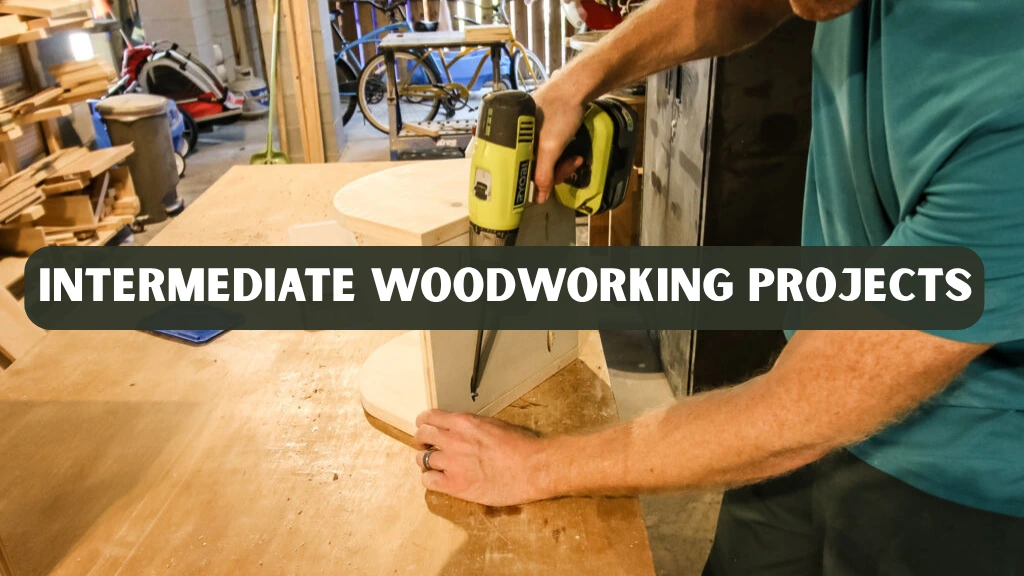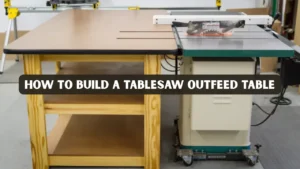Once you have mastered the basics of woodworking, the next step is to challenge yourself with intermediate woodworking projects. These projects are designed to push your skills beyond simple cuts and beginner-friendly tasks, allowing you to develop precision, advanced tool handling, and creativity. They bridge the gap between beginner projects and complex woodworking, offering opportunities to create functional furniture, decorative items, and intricate lathe work. Intermediate projects are not just about producing a finished piece; they are a chance to refine your techniques and gain confidence in using a wide variety of tools.
This guide presents fifteen carefully selected projects suitable for woodworkers ready to move beyond the beginner stage. Each project includes practical advice, required materials, step-by-step instructions, and tips for success. By following these projects, you will strengthen your craftsmanship, develop problem-solving skills, and gain the experience necessary to tackle more advanced woodworking challenges.
Why Choose Intermediate Woodworking Projects
Choosing to work on intermediate woodworking projects is essential for anyone looking to improve their skills and build confidence. Unlike beginner projects that focus on basic techniques, intermediate projects combine multiple woodworking skills such as joinery, carving, turning, and finishing. They also encourage creative thinking, as you often need to design or adapt patterns to fit your project. By working on intermediate pieces, you gain greater control over your tools and develop an understanding of how different techniques can be combined for better results.
These projects also offer the satisfaction of creating functional and aesthetically pleasing items. From furniture pieces to decorative bowls, each project allows you to see tangible progress while enhancing your technical abilities. Working on intermediate projects helps woodworkers understand the importance of precision, patience, and careful planning, which are all key to achieving professional-quality results.
Essential Tools for Intermediate Woodworking
For these projects, having the right tools is crucial. A wood lathe is essential for turning bowls, pens, and rolling pins. Chisels and gouges allow for precise shaping and detailed carving, while a table saw or circular saw ensures accurate cuts on larger pieces. Band saws and jigsaws are ideal for curved or irregular shapes, and sanding tools such as orbital sanders and sanding blocks help achieve smooth finishes. Clamps and jigs are indispensable for holding workpieces securely, and accurate measuring tools such as squares, calipers, and marking gauges are necessary for precision.
Optional advanced tools, including CNC routers, router tables, and drill presses, provide opportunities to create more complex designs and consistent results. Even without these advanced tools, intermediate projects can be accomplished effectively with careful planning, proper techniques, and attention to detail.
Intermediate Woodworking Projects
Turned Wooden Bowls
Turned wooden bowls are a classic way to develop your skills on the lathe. Start with a hardwood blank, such as maple, cherry, or walnut, and mount it securely on the lathe. Begin with rough turning to shape the exterior, then hollow the interior carefully, ensuring uniform thickness. After refining the shape, sand progressively from coarse to fine grit, and finish with a protective coating. This project teaches hollowing techniques and introduces wood finishing methods that can be applied to more advanced work.
Pen Turning
Pen turning is a smaller-scale project that focuses on precision and attention to detail. Using hardwood blanks and pen kits, mount the blank on the lathe and turn it to the desired diameter. Sand the surface carefully and apply a polish or finish to bring out the wood’s natural beauty. Finally, assemble the pen components. Pen turning hones your fine motor skills and provides an introduction to working with small, intricate pieces on a lathe.
Jewelry Boxes
Jewelry boxes combine joinery, carving, and decorative inlays. Begin by cutting panels to size from hardwoods such as cherry, maple, or walnut. Assemble the box using tight-fitting joints, ensuring that all corners are aligned perfectly. Add decorative carvings or inlay designs to enhance the visual appeal. Apply a smooth finish to protect the wood and showcase its natural grain. Jewelry boxes are excellent for developing both technical woodworking skills and an eye for design.
Cutting Boards with Inlays
Creating cutting boards with inlays allows you to experiment with precision cutting and pattern design. Using contrasting hardwoods, design a pattern for your cutting board. Cut the individual pieces, glue them together, and sand thoroughly. Apply a food-safe finish to complete the project. The careful assembly and alignment required for inlays help improve accuracy and problem-solving skills.
Rolling Pins
Rolling pins are practical items that also allow for skill development on the lathe. Select a hardwood blank such as maple or beech, mount it, and shape the cylinder to uniform diameter. Taper the handles evenly, sand carefully, and apply a food-safe finish. Working on rolling pins teaches symmetry, consistent shaping, and smooth finishing.
Wooden Utensils
Wooden utensils such as spoons, spatulas, and ladles offer opportunities to practice carving and shaping. Using hardwood or fruitwood, carve the desired shape, refine it with sandpaper, and finish with a food-safe coating. These projects focus on ergonomic design and surface finishing, emphasizing both utility and aesthetics.
Candle Holders
Candle holders provide another avenue to practice decorative turning and carving. Design the height and diameter, then turn the base and shape the holder. Carve any decorative details and apply a finish to enhance the appearance. This project encourages creativity while maintaining precise control of the lathe.
Small Furniture Pieces
Small furniture pieces, such as stools, side tables, and shelves, involve multiple skills including joinery, assembly, and finishing. Precision is critical to ensure stability and symmetry, while the finishing process enhances both durability and appearance. Working on furniture projects helps develop an understanding of load-bearing structures and design considerations.
Wooden Toys
Wooden toys are another engaging category. Simple toys like cars, puzzles, or spinning tops can be crafted with careful shaping and sanding. Non-toxic paints or finishes should be used for children’s toys. Toy-making encourages attention to detail, safety considerations, and creative problem-solving.
Wall Art Panels
Creating wall art panels allows for artistic expression alongside woodworking skill. Using plywood or solid wood, design a pattern and carve the details using carving or routing tools. Multiple panels can be combined for larger decorative compositions. This project helps develop precision in cutting, carving, and texturing techniques.
Lathe-Turned Bowls with Resin Inlay
Lathe-turned bowls with resin inlay combine traditional woodturning with modern epoxy techniques. Using burl wood, hollow the bowl and fill natural cracks with colored resin. Sand and polish after the resin cures. This project introduces techniques for working with composite materials and managing different curing times and lathe handling.
Wooden Wine Rack
A wooden wine rack is a functional project emphasizing joinery and precision. Cut and assemble hardwood pieces, ensuring angled slots for secure bottle placement. Attention to measurement and fit is key, and finishing protects the wood while maintaining its aesthetic appeal.
Decorative Wooden Boxes with Lids
Decorative wooden boxes with lids are similar to jewelry boxes but can include more intricate carvings or mechanisms. Proper hinge installation, careful assembly, and detailed finishing make this a rewarding intermediate project. Using a router or carving tools allows for intricate lid designs and precise edges.
Multi-Tier Plant Stands
Multi-tier plant stands challenge your ability to create angled cuts and assemble stable structures. The finished stand must support the weight of multiple plants without tipping. Proper planning and careful assembly ensure a balanced, functional, and attractive piece.
Wooden Clocks
Wooden clocks combine lathe turning, joinery, and installation of clock mechanisms. Hardwood is used for the body, and a clock kit is added to complete the project. Precise measurements and smooth finishing are essential to create a functional and visually appealing piece. Clocks combine technical precision with artistic expression, providing a satisfying intermediate challenge.
Tips for Successful Intermediate Woodworking
Safety is paramount when working on intermediate projects. Always wear protective goggles and hearing protection, and follow proper tool usage guidelines. Precision is equally important; accurate measurements and careful assembly lead to better results and fewer errors. Practice different finishing techniques, such as applying stains, oils, lacquers, or wax, to enhance the final appearance of your pieces. Templates and jigs are helpful tools that ensure consistency and symmetry in your work, particularly for repeated cuts or detailed patterns. Documenting your work by taking notes and photographs can help track your progress, analyze mistakes, and identify areas for improvement. Developing these habits improves both your skills and your confidence in taking on more complex projects.
Case Study Building a Multi-Tier Plant Stand
John, an intermediate woodworker, wanted to create a multi-tier plant stand for his living room. He carefully measured and cut hardwood pieces, ensuring that each level was balanced and stable. By creating angled supports and testing weight distribution, he avoided tipping issues. After sanding each piece and applying a smooth finish, the stand not only held multiple plants securely but also became a decorative focal point in his home. This project demonstrates practical skill, creativity, and problem-solving, all essential elements of intermediate woodworking projects.
Conclusion
Working on intermediate woodworking projects is an excellent way to improve skills, explore creativity, and produce functional and visually appealing wood pieces. Projects ranging from turned bowls to furniture, toys, and decorative items help woodworkers move beyond beginner-level tasks and gain confidence in their techniques. Patience, careful planning, and attention to detail are essential for achieving professional results. By embracing these challenges, woodworkers can enhance their skills, prepare for advanced projects, and enjoy the satisfaction of creating beautiful and functional items from wood.
FAQs
What qualifies as an intermediate woodworking project?
Intermediate projects combine multiple techniques and require precision, problem-solving, and familiarity with various tools. They often include turning, carving, joinery, or finishing skills.
How long do intermediate projects take?
Project durations vary depending on complexity. Some projects can be completed in a few hours, while more advanced pieces may take several days. Proper planning and patience are essential.
Do I need a lathe for intermediate woodworking?
While not all projects require a lathe, it is helpful for creating bowls, pens, and other rounded or symmetrical pieces.
Can beginners attempt these projects?
Beginners can attempt some projects with guidance, but starting with simpler tasks is recommended to avoid frustration and mistakes.
Where can I find project ideas and inspiration?
High-quality woodworking resources such as Fine Woodworking offer project guides, tutorials, and tips suitable for intermediate woodworkers.




